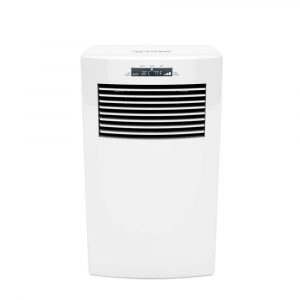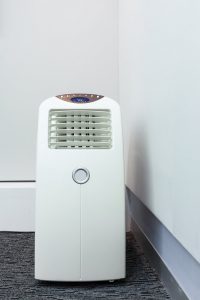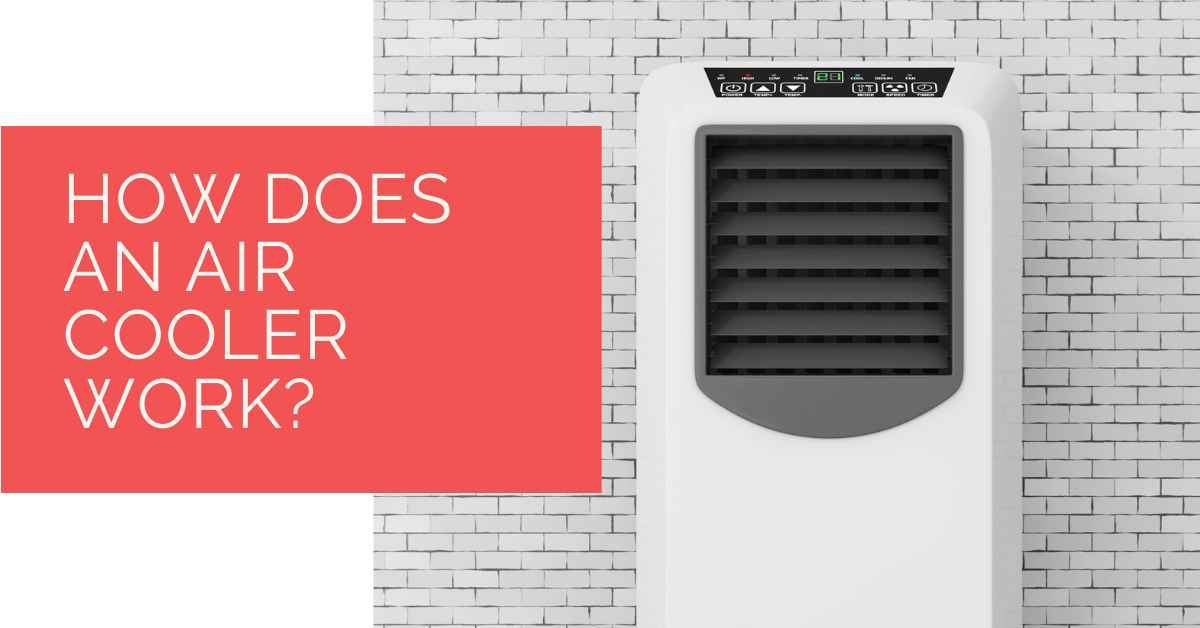As the temperature rises, people resort to air conditioners to keep themselves cool. On a sweltering summer day, nothing beats sitting in an air-conditioned room for relief.
Summers and rising electricity expenses go synonymously, creating a hardship for most homeowners and business owners. Air coolers aid in this situation. They are significantly more eco-friendly, on budget, and offer cleaner and healthier air.
Having said so, you must get the appropriate air cooler for your needs. While purchasing an air cooler might appear to be a straightforward process, it may prove confusing considering the various varieties, features, and functions of air coolers.
To help you with this, here is a guide explaining how air coolers work and what may be the best option for you.
Contents
Key Takeaways
- Air coolers work through a natural process called evaporative cooling, making them eco-friendly, cost-effective, and easy to transport.
- There are different air coolers, including desert air coolers for dry climates, personal air coolers for small spaces, tower air coolers for narrow rooms, and window air coolers for fresh air circulation.
- Understanding how each type of air cooler works and its features can help you choose the most suitable one to meet your cooling needs and preferences.
The Inner Workings Of Air Coolers
Air coolers utilise an organic process called evaporative cooling to cool the atmosphere and do not rely on sophisticated gear. This implies that they are far less expensive, lighter, smaller, and easier to transport. They also consume less power, making them both environmentally friendly and inexpensive to run.
Evaporative Cooling
 Evaporative cooling takes place when air passes over water. When water has evaporated, it draws part of the heat out from the air. Therefore, when the wind blows in through the sea, it feels so cold.
Evaporative cooling takes place when air passes over water. When water has evaporated, it draws part of the heat out from the air. Therefore, when the wind blows in through the sea, it feels so cold.
Air coolers also are referred to as evaporative coolers since they employ this natural mechanism to cool the air, providing more pleasant air.
How Does Evaporative Cooling Work in Air Coolers?
A tank of water, an absorbing sheet, and a fan are the three primary components of an air cooler. You put cold water in the tank and let the porous sheet soak up. When the water on the sheet vapourises, it reduces the temperature surrounding it. The fan thereafter blows this freshly cooled air around your home for a pleasant, soothing breeze!
Furthermore, some air coolers come with a trump card: two complimentary ice pods. These can be frozen and placed in the tank to further cool the water for more effective cooling.
The Various Sorts of Air Coolers
When picking an air cooler, the vast array of sizes, forms, designs, and functions commercially available will baffle you. So, before you start looking for an air cooler, you should first learn about the kinds available.
Desert Air Coolers
Desert air coolers include a huge tank volume, a huge fan or blower, and a robust motor, making them ideal for dry climates. With their exceptional air throw and distribution, these machines can cool vast regions. Additionally, they can operate for lengthy periods because of their large tank capacity.
How Does it Work?
Water evaporation and latent heat of vapourisation are two extremely basic physics phenomena employed in the working of a desert air cooler.
The 3 sides of a desert chiller have chilling pads that are constantly moistened by water. It also features a fan that draws air from the outside and blows it into the room.
When air passes across cooling pads, its warmth is transferred to the water upon those pads, causing the air to chill and the liquid on the cooling pads to dissipate by absorbing hot air. The chilled air is then pumped into the room by a fan.
Water has a latent heat of vapourisation of roughly 2260 kJ/kg. As a result, 1kg of liquid will use about 2260 kJ of latent heat from the air during the vapourisation process which will then reduce the air temperature.
Personal Air Coolers
Private air coolers are much more of a tailored cooling system suited for usage in small rooms or situations where outdoor cooling is not required. They use considerably less power and function much more silently than desert coolers.
These coolers commonly come equipped with caster wheels for convenient mobility. Personal air coolers, which take up far less area than desert coolers, operate better if closer to them.
You can easily find one that perfectly matches your home or workstation because they come in several forms, patterns, and sizes.
How Does it Work?
 A personal cooler is a device that draws in air and circulates it over water-cooled pads using a fan. The water vapour converts into a moist vapour as it travels over the moist pads, which will then be blasted out and into the area by the fan.
A personal cooler is a device that draws in air and circulates it over water-cooled pads using a fan. The water vapour converts into a moist vapour as it travels over the moist pads, which will then be blasted out and into the area by the fan.
Moisture absorbs hot air, cooling the air and letting the environment feel colder. This is similar to the human body’s cooling mechanism.
Tower Air Coolers
Tailored to accommodate the littlest of rooms, tower air coolers are slender, stylish, and classy. They release airflow at a higher position than other coolers, therefore, their primary benefit is their length.
How Does it Work?
A tower air cooler relies based on the cooling effect, which involves chilling the air by the loss of moisture. Warm, clean air from the atmosphere goes through a condensing medium and the chilling pads, by which water is pumped with the aid of a pump mostly in the instances of a cooling system.
Window Air Coolers
As the name suggests, window air coolers are designed to be installed in windows, saving you valuable floor space that you can put to better use. These coolers are the finest alternative for cycling fresh air within the space as they draw air straight from outside.
How Does it Work?
Window air conditioning units utilise two air cycles. To chill the space, a fan blows air on the condenser on the inside of the device, and to cool the evaporator, a separate fan outside the window air conditioner blows air over it.
The purpose of a window unit is to circulate the air. Room air is the wind within your house, out in front of the air conditioning unit where the chilling coil is located.
When the window air conditioner turns on, the motor and the blower turn on as well. As long as the conditioning coil’s compressor remains on, the temperature begins to drop. The warm air cycle is an essential part of managing how window ACs function.
The exterior, or “atmospheric,” air being used to chill the evaporator is the emphasis of this cycle. This “atmospheric” wind is already quite warm; after absorbing energy from the condenser, the temperature goes up even further.
The coolant reaches the heat exchanger first, then the condenser, or cooling coil, once it has cooled. Thereafter, the hot air mixes with the surrounding air, and the airflow is collected and pumped over the evaporator. As a result, the hot air cycle continues.
Heat Pump Source: Reliable Heating and Cooling Solutions
At Heat Pump Source, we take pride in our unwavering commitment to serving the UK with top-tier HVAC solutions. From the efficiency of heat pumps and the cool relief of air conditioning to the warmth of boilers, radiators, and underfloor heating, our dedicated team is always at the forefront of innovation. We understand the unique needs of every household and business, and we strive to provide dependable health and cooling products and services that are tailored just for you. Ensuring your comfort and satisfaction is our utmost priority. Whether you have questions, need guidance, or require support, we’re always here to assist. Please don’t hesitate to contact us; we’re eager to be of service.
Conclusion
This article entailed not only information on how air coolers work. But also talked about how you can choose the best air cooler possible that suffices all your needs. Now that you know the benefits and key requirements to look out for, you can adequately choose one that fits your criteria.
About the Author
At Heat Pump Source, our articles are the product of a collaborative effort among a team of highly skilled HVAC experts. Our dedicated professionals, hailing from diverse backgrounds in heating, ventilation, air conditioning, and refrigeration, contribute their extensive knowledge and experience to every piece of content. This multidisciplinary approach ensures comprehensive coverage. Our commitment is to deliver authoritative, reliable, and tailored advice to meet the unique needs of every household and business across the UK.

